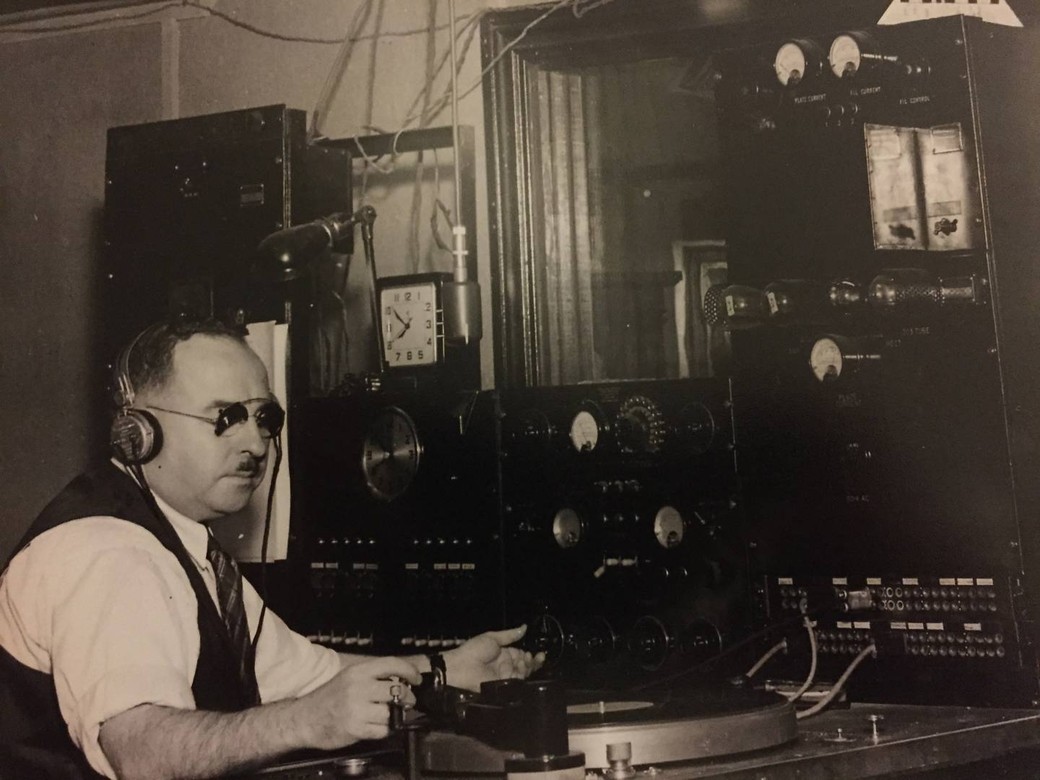Laudreville Daytime C.K.C.O. Studio, Somerset Street
Ottawa native Shirley Shorter recalls a time when Canadian radio broadcasting was no more complex than a local talent performance airing live from the dining room of her Somerset Street West home. A recent interview with Mrs. Shorter, now 94-years-old, captures a period in the history of radio broadcasting in Ottawa when she and her family played an important part.
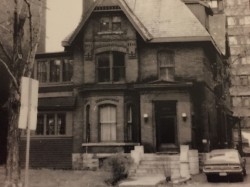
The story begins in 1924.
Mere footsteps from young Shirley’s bedroom door, her father Dr. G.M. Geldert, an anesthetist at the Ottawa Civic Hospital, gave rise to the foundations of media in the Nation’s Capital. The dining room of her 19th century downtown home would undergo a nightly transition into a studio for the programming of Canada’s first private radio station: C.K.C.O. “World’s best coverage of the World’s biggest News Daily.”
The family living room housed a transmitter. Each evening, furniture would be placed to the side of the room where Shirley Shorter and her family had eaten dinner only minutes prior. Controls and equipment was set-up by local church members and curtains hung for sound improvement. Radio programming would then commence.
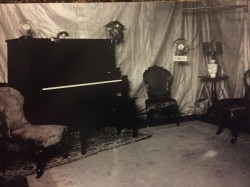
Young Shirley would spend the majority of her evenings viewing films with her mother, at the Old Imperial Theatre (currently Barrymore’s) on Bank Street. Other evenings were consumed with quiet time in her bedroom, or more favourably, engaging in playtime outdoors.
With the exception of two contributors, C.K.C.O. radio network participants were unpaid volunteers.
Shorter regards the only paid employees of the radio station with high esteem: Mr. Gordon Young and Mr. Ian Henderson.

“Gordon was a man with a very pleasing voice. He was the main radio announcer,” she says.
“Ian Henderson built loudspeakers for Dr. Geldert’s automobile. These speakers were used for C.K.C.O. participation at football games, and for use at local county fairs, in places such as Metcalfe, Carp, and Carleton Place.”
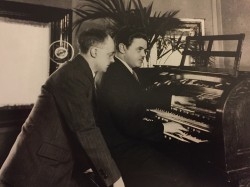
Ian Henderson also opened the first Ottawa Radio store on Elgin Street in the late 1930’s.
Geldert’s undertakings with C.K.C.O. derived from interests beyond mere business appeal. Family legacy, social networking and euphoric entertainment were motivators to begin programming. The origins of Canadian Broadcasting are rooted in appreciation for the exposure of talent, live music, learning and social interests.
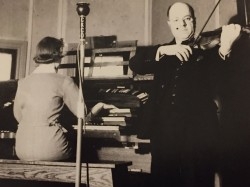
Doctors, family friends, local church members and other community contributors shared a common interest in the progression of the station. Any members of the community, who had musical talent or something to contribute, were permitted to participate in C.K.C.O. Radio Programming. “Rene Merrier and his wife would perform violin music each evening for approximately a half hour,” says Shorter. The nightly, live violin performances soon became a featured attraction for C.K.C.O., Shorter affirms.
Shorter and her two siblings filled their spare time expanding their imaginations with the use of radio equipment, professing themselves as upcoming celebrity broadcasters.
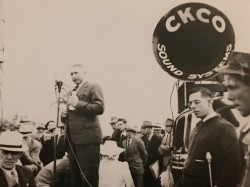
The diversity of themes displayed through C.K.C.O. media was vast. The Football Games, Sheriff’s Fun Parade, Parent’s Magazine, Forward With Canada, and Light Up And Listen were only some of the programs from the station’s early years. All music was live. All discussion was live.
In the late 1930’s, CBC Radio Canada emerged. At this time, Ottawa had only one network capable of airing live radio. CBC Radio and C.K.C.O. were inevitably forced into sharing air-time. In light of the odd show that may have aired overtime, Shorter recounts occasions where her dad would blame CBC for ‘stealing his time.’ In laughter, Shorter describes CBC Radio in respect to C.K.C.O., as comparable to modern day petty rivalries.
In 1931, the Geldert family moved next door on Somerset Street West. The intent was to renovate the entire top level into a permanent studio for the radio station. Geldert built an addition to the new Somerset home, creating space for an organ purchased from the Old Imperial Theatre. Jesse Crawford, a famous New York organist, conducted the first radio show using the newly purchased instrument. This began the era of celebrity radio appearances.
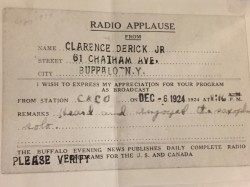
In unison with the move, C.K.C.O. embarked on shifting from private to commercial broadcasting. The central motive in becoming commercial was grounded in advertising guidelines and the increased opportunity to obtain funding.
It did not take long for C.K.C.O. to convert into a camping ground for department stores, healthcare and alcohol advertisements. Liquor campaigns quickly developed into a significant proportion of C.K.C.O. profit.
Ironically, Ontario passed legislature banning alcohol advertisements on the radio. In response, Geldert relocated the housed radio transmitter. He increased the strength of the frequency and placed a transmitter on a small island in the Ottawa River between Ontario and Quebec border. Geographically, the transmitter was less than a five-minute walk from the studio. This allowed C.K.C.O. to maintain the increase in revenue, while adhering to the policy.
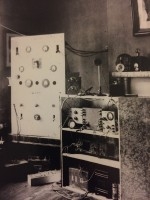
In 1945, C.K.C.O. became Ottawa’s affiliate of the newly established Canadian Broadcasting Corporation’s Dominion Network. In this same year, due to undisclosed intellectual property issues, Geldert was forced to alter the existing C.K.C.O. call letters to a freshly established ‘C.K.O.Y.’
Encouraging memories of C.K.O.Y. for Shorter involved the participation of Ottawa’s well known J.J. Clarke. She speaks with sadness of a defining moment, when Geldert presumed local television networking would be the demise of radio communications. With this fate in mind, and feeling “too old to learn the ways of television media” he severed all ties with the station.
“New needs need new techniques. And the modern artists have found new ways and new means of making their statements. The modern painter cannot express this age, or the radio, in the forms of the renaissance, or of any other past culture.”—Jackson Pollock.
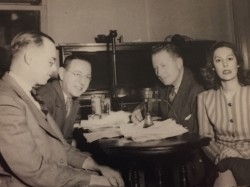
Over 90 years since G. M. Geldert founded the first radio station in Ottawa back in 1924, Shirley Shorter has fond memories of a time when her family home was a venue for volunteer-based, talented musicians, celebrity introductions, political debates and social functions. Since that time radio broadcasting has shifted from a living room in a family home to modern offices and state of the art equipment. Evidently the times have changed.
